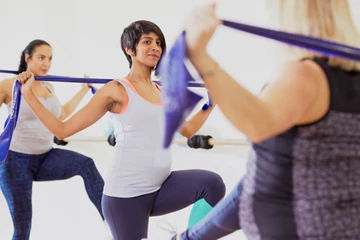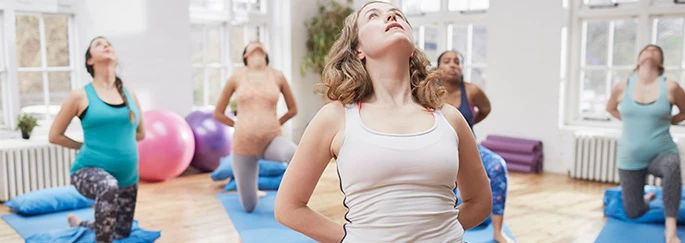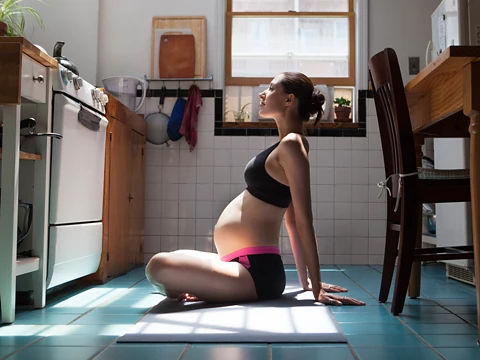Exercises to avoid during pregnancy
If your pregnancy is straightforward and your doctor or midwife has given you the go-ahead, you can carry on exercising and even start a new routine. Studies now show that it is, in fact, highly beneficial for expectant mums to exercise, or get Active for 2. But there are some guidelines to bear in mind which aim to protect the health of you and your developing baby.

Safety first: Check with your midwife
Before you begin exercising while pregnant, talk to your doctor or midwife. Whether you’re continuing with an activity that you enjoyed before, or want to start a new routine, let them know. For some women, certain conditions can make it unadvisable to exercise during pregnancy, so it’s best to get advice from your healthcare professional first.
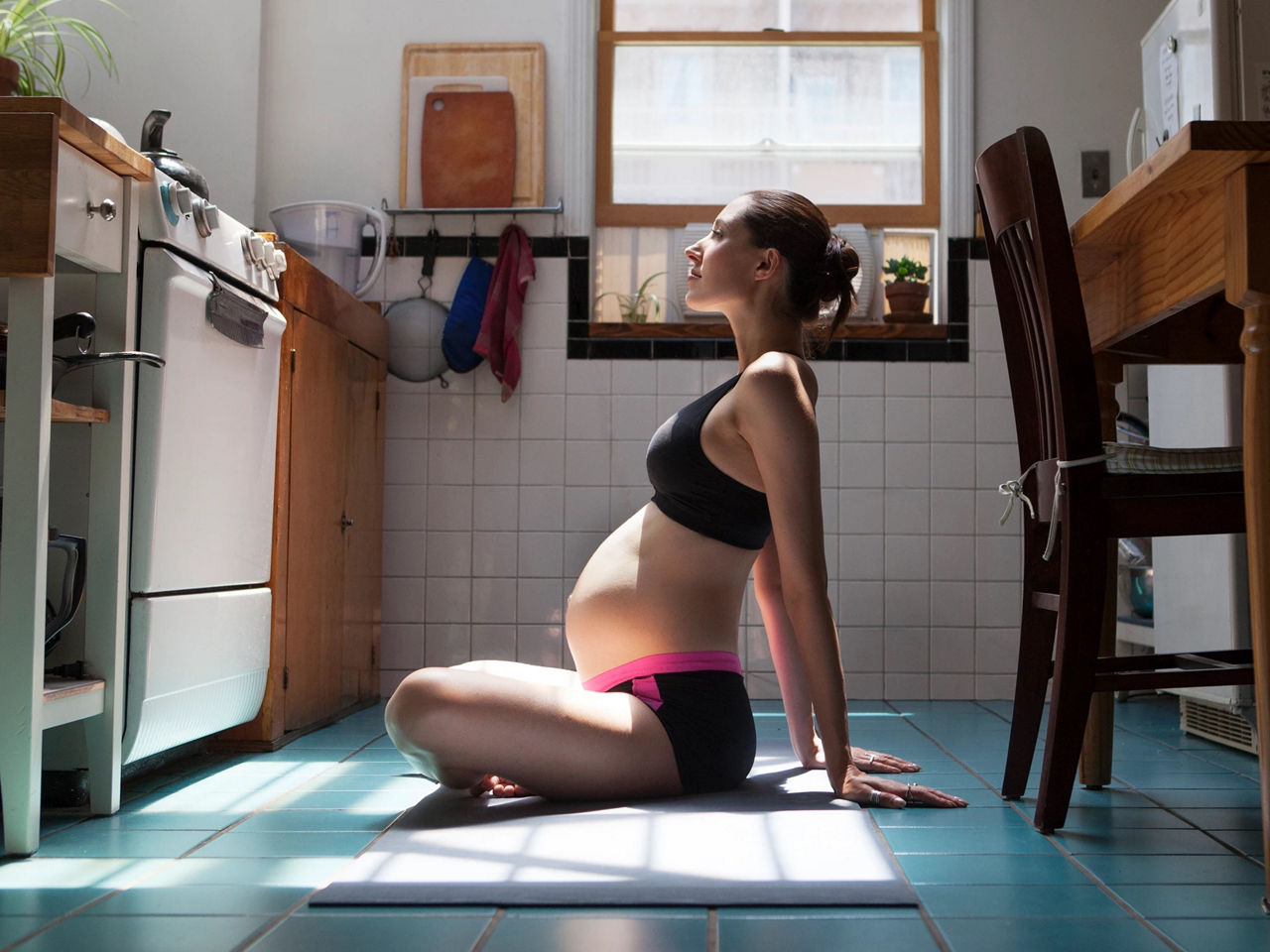
You can and should still include core and pelvic floor strengthening exercises in your routine.
No crunches or lying flat
Perhaps the simplest change you’ll have to make is to avoid lying flat on your back for long periods, especially after 16 weeks. The weight of your bump pressing on certain blood vessels can reduce cardiac output1, make you feel dizzy and affect the flow of blood that carries nutrients and oxygen to your baby. Instead, try lying on your side.
While this means traditional stomach crunches are out, you can and should still include core and pelvic floor strengthening exercises in your routine. One way to work your core is to lower yourself onto all fours and make a box shape, with your hands under your shoulders, knees under your hips, and your back straight. Pull your stomach muscles in, arching your back towards the ceiling like a cat. Hold for a few seconds, return to neutral, then repeat2.
What is a ‘safe’ pregnancy heart rate?
Once upon a time, experts recommended that a pregnant woman’s heart rate should not exceed 140 bpm, but our understanding of fitness has since moved on. An increase in your resting heart rate (by approximately 10 bpm) is a normal physiological consequence of pregnancy3. Just like fitness levels, heart rates vary between individuals, so keeping your heart rate below a specific value is not appropriate.
The best rule is to exercise at a moderate intensity; you should be able to hold a conversation throughout.
An increase in your resting heart rate is a normal physiological consequence of pregnancy.
What is a ‘safe’ body temperature?
Specific recommendations regarding body temperature during pregnancy are sparse; however, experts agree that you should avoid undertaking activities that will raise your core temperature by more than 2°C – or above 38.9°C4. This is because such a temperature change may result in hyperthermia (the opposite of hypothermia). Hyperthermia during pregnancy has been linked to a twofold increase in the risk of birth defects impacting the spine or brain. As such it is not advisable to use hot tubs or spas during pregnancy, and hot yoga should be avoided5.
However, moderate exercise – whether it’s running, swimming or regular yoga – should not raise your core temperature above these levels.
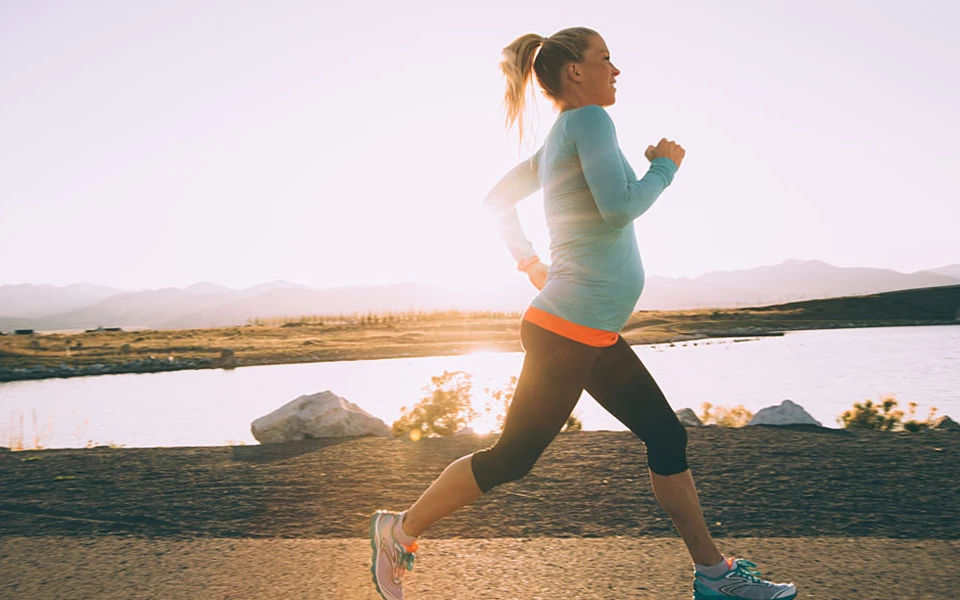
Which exercises should I not do when pregnant?
Although not all of the following activities have been directly linked to harming your baby during pregnancy, certain activities may put you in a position where falls or knocks to your bump are more likely.
- Contact sports like martial arts, football, rugby, squash and hockey all carry a risk of impact. A strong blow to your bump, whether it’s from an adult foot or a football, could injure your baby.
- Horse riding, cycling, skiing and gymnastics can become more difficult as your bump grows and your centre of balance shifts. You’re advised to avoid these activities, and any others that carry a risk of falling (including climbing ladders) because falling onto your bump could have serious consequences. If cycling is your main means of transport, you may wish to continue in the early stages, but it’s worth thinking about an alternative if, later on in your pregnancy, your bump begins to restrict your leg movements and you start to feel unbalanced.
- Scuba diving while pregnant should be avoided as your baby will have no protection against decompression sickness (‘the bends’) or gas embolism – bubbles in the bloodstream that can cut off blood supply or cause breathing difficulties6. In fact, scuba diving while pregnant has been directly linked to birth malformations7.
- Bikram yoga (or hot yoga) involves a sequence of postures practised in a heated room. While no one has studied the effects of hot yoga specifically, experts agree that pregnant women should avoid raising their core body temperature to reduce the risk of neural tube defects.
Of course, the majority of exercises are safe – when carried out in moderation. To get started meet our Active for 2 Running, Swimming, Yoga and Strength Training coaches and find a routine tailored to your trimester. If you prefer to exercise at home you can follow our yoga or strength training videos from the comfort of your own living room.
Next steps
Make sure you speak to your doctor or midwife before you start exercising in pregnancy or modify your existing exercise routine. Once you’ve been given the all-clear:
Read about the benefits of exercise during pregnancy for both you and your baby.
Watch videos and get tips from our Active for 2 pregnancy fitness coaches.
Let your personal trainer or gym staff know that you’re pregnant. It will enable them to give you extra guidance and ensure they’re well informed if you need medical assistance. Also ask if they offer any membership benefits now you’re pregnant, such as the option to put your membership on hold during the first few months after birth.
Shop for comfortable maternity sportswear that will support your growing bump. It’s also worth investing in a roomier sports bra to accommodate your increasing cup size.
Related articles

Need some help?
You can get quick answers to common questions in our FAQs.
Alternatively, if you need help with general pregnancy or baby advice, or maybe on using or ordering our products - our expert team are always on hand to talk about feeding your baby.
- Bamber J, Dresner M. Aortocaval compression in pregnancy: the effect of changing the degree and direction of lateral tilt on maternal cardiac output. Anesth Analg 2003;97(1):256-8.
- Livestrong. Max heart rate while pregnant [Online]. Available at: http://www.livestrong.com/article/322176-max-heart-rate-while-pregnant/ [Accessed: December 2016].
- Gowda RM et al. Cardiac arrhythmias in pregnancy: clinical and therapeutic considerations. Int J Cardiology 2003;88(2):129-33.
- Source: Chambers CD. Risks of hyperthermia associated with hot tub or spa use by pregnant women. Birth Defects Res A Clin Mol Terato 2006;76(8):569-73.
- Chan J et al. Hot yoga and pregnancy: Fitness and hyperthermia. Can Fam Physician 2014;60(1):41-2.
- Camporesi EM. Diving and pregnancy. Semin Perinatol 1996;20(4):292-302.
- Damnon F et al. Should a pregnancy test be required before scuba diving? Br J Sports Med 2016 Sep;50(18):1159-60.
Last reviewed: 9th December 2016

